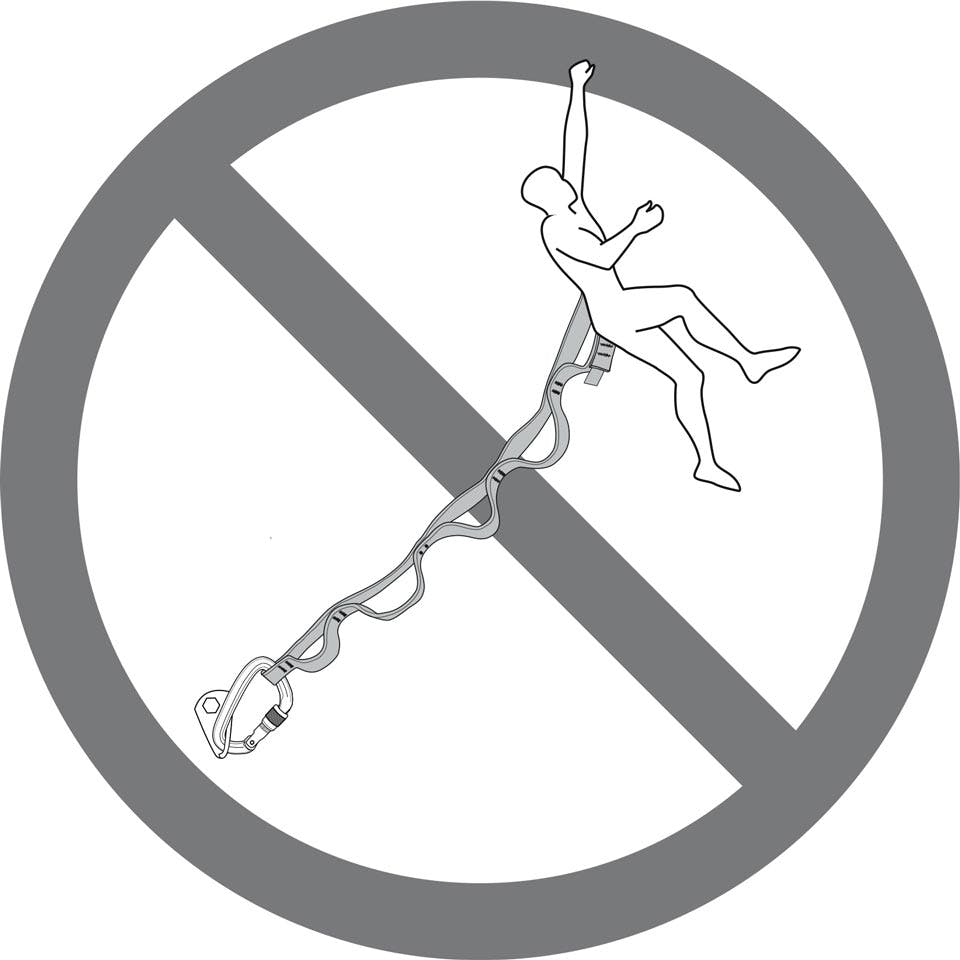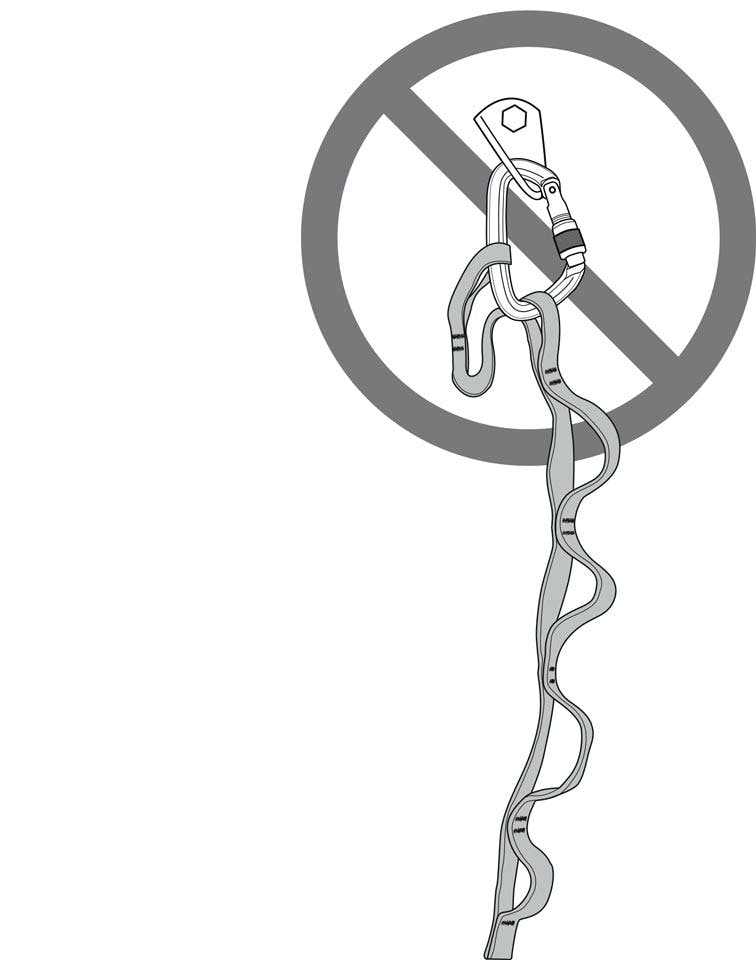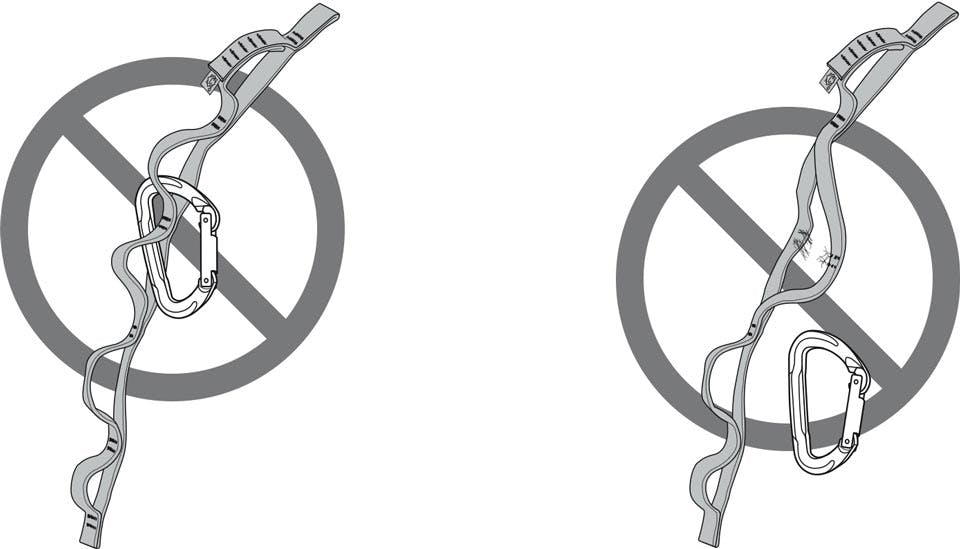
NOT A COMEBACK: HAZEL FINDLAY POSTPARTUM
BD Athlete Hazel Findlay shares her tips for returning to the climbing life for new...
Add 100 EUR more to quality for free Shipping!
€0,00 EUR

Let's be clear: You should NOT be using a daisy chain to anchor yourself to a belay.
Daisy chains are designed for aid climbing only and to support body weight only. When aid climbing properly, the rope is ALWAYS in the system, and in the event of a fall, the energy absorbing capacity of the rope is used. If you use a daisy chain to anchor yourself to a belay, you've now taken the rope out of the equation and are potentially subjecting yourself and the daisy chain to a possible shock-loading scenario. You should NEVER be impact loading a daisy chain. NEVER. Daisy chains and runners don't stretch much, which means they don't absorb much energy. This increases the load on the anchor, and you. Worse-case scenario under a severe-impact load, a daisy can snap. Best-case scenario under a severe-impact load, you'll snap your back.

Basically, it's possible that when you clip a second loop, or pocket of your daisy, to the main carabiner, attached to the end loop of your daisy, that the end result MAY really be the biner just being clipped across the tack of the pocket, and therefore being really, REALLY weak—as low as 500 pounds. Below is a video that clearly shows the danger. You may have to watch it a few times, because it's pretty freaker crazy, and no, I'm not a magician.

Crazy eh? It's almost like you have a 50/50 shot of having the twist in the extra pocket as your shorten up your length. With the correct twist, and if impact loaded, the pocket would blow and you'd be okay, BUT with the incorrect twist and even a very small impact load (say your foot skating off the belay ledge and you falling onto your daisy), the pocket would blow and you'd be airborne. Those odds aren't good enough for me. Use a second carabiner to clip up short.
From our instructions:

BD Athlete Hazel Findlay shares her tips for returning to the climbing life for new...
BD Athlete Hazel Findlay shares her tips for returning to the climbing life for new mothers.

A film documenting the first flash ascent of El Capitan by BD Athletes Babsi Zangerl...
A film documenting the first flash ascent of El Capitan by BD Athletes Babsi Zangerl and Jacopo Larcher.


BD Athletes Babsi Zangerl and Jacopo Larcher share their story of climbing one of the...
BD Athletes Babsi Zangerl and Jacopo Larcher share their story of climbing one of the world’s most mythical trad routes.

BD Athletes Aaron Mulkey and Yannick Glatthard take the new Hydra into the backcountry of...
BD Athletes Aaron Mulkey and Yannick Glatthard take the new Hydra into the backcountry of Montana in search of steep ice and mixed climbing.

Follow Dorian Densmore and Mya Akins for a month-long, exploratory mission in the Chugach Mountains.

Two BD legends walk into the Valley. What happens next? Watch and see.
With ski season kicking off, the QA Lab crew dives deep into the world of...
With ski season kicking off, the QA Lab crew dives deep into the world of electromagnetic interference and how it can affect backcountry safety.

Light is right, but steel is real. So, when it comes to ice screws, what’s...
Light is right, but steel is real. So, when it comes to ice screws, what’s the deal? In this QC Lab, Will Gadd and Matt Berry thread their way to the source of truth when it comes to aluminum vs. steel ice screws.

She was many things—a Stonemaster, an outdoor industry visionary, a physicist. A rock dropped into...
She was many things—a Stonemaster, an outdoor industry visionary, a physicist. A rock dropped into a pond that created ripples, affecting many lives and generations of climbers. This is the story of our unsung hero, our co-founder.


Go ahead, take the whip. You’ve got a trucker bolt just below. But wait …...
Go ahead, take the whip. You’ve got a trucker bolt just below. But wait … you sure about that? In this Gear Myths, Kolin “KP” Powick shares a recent close call, which resulted in an exploration of safety protocol when it comes to sport climbing.

The QC Lab team is joined by IFMGA Mountain Guide Mark Smiley to discuss the...
The QC Lab team is joined by IFMGA Mountain Guide Mark Smiley to discuss the subtle art of building, testing, and using snow anchors.

Follow these expert pointers on how to properly build out your very first trad rack.

A look into the technology and construction of an essential tool for hiking and trail...
A look into the technology and construction of an essential tool for hiking and trail running.
